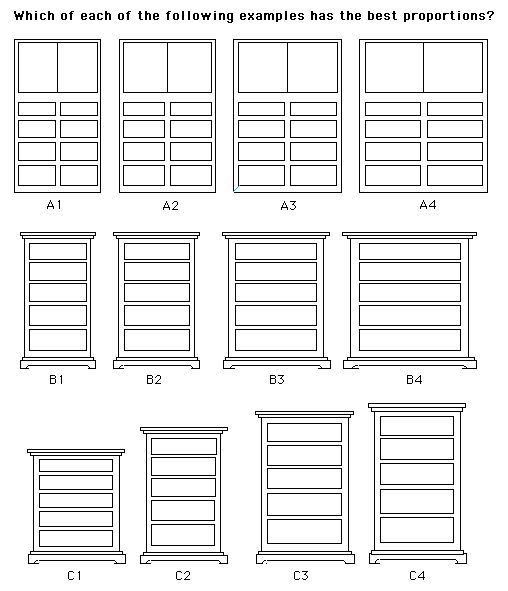Proportions can make or break a design. Choose the right proportions and the piece will attract the eye, hold its interest and connect with the viewer. It will "just look right". Choose the wrong proportions and no matter how much time you spent on selecting the wood, laying out parts so the grain will be pleasing, no matter how well you executed the joinery or how much time you spent french polishing the piece, it "just won't look right".
We humans seem to have a brain stem level ability to recognize some patterns, shapes and proportions "that just look right" and distinguish them from what "just doesn't look right". Just as we can tell when a fruit is ripe, or when the milk "has gone bad" or when something is precariously balanced, we seem to have a natural of sense of good proportions and not good proportions. A table with a massive top and delicate, spindly legs will feel uncomfortable to look at, let alone put anything heavy on.
Artists, architects and craftsmen have been exploiting this human quality almost forever - tricks of the trade.
Let's look at one of these tricks of the trade
